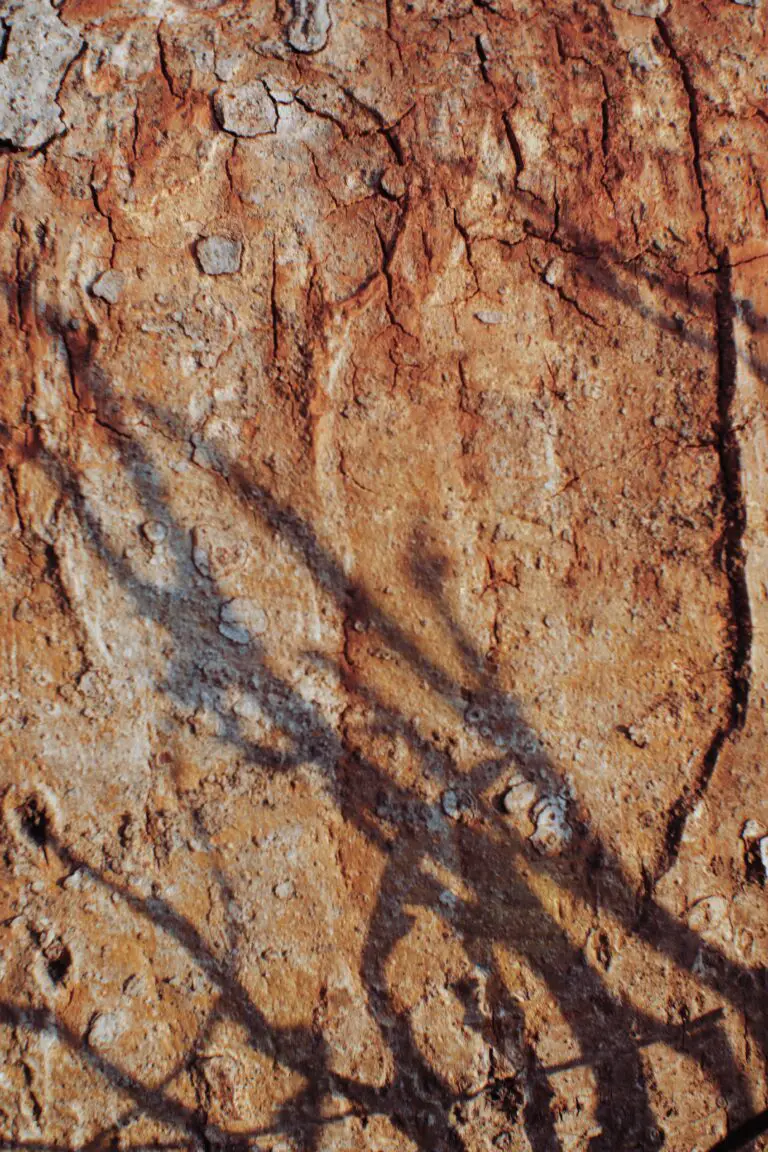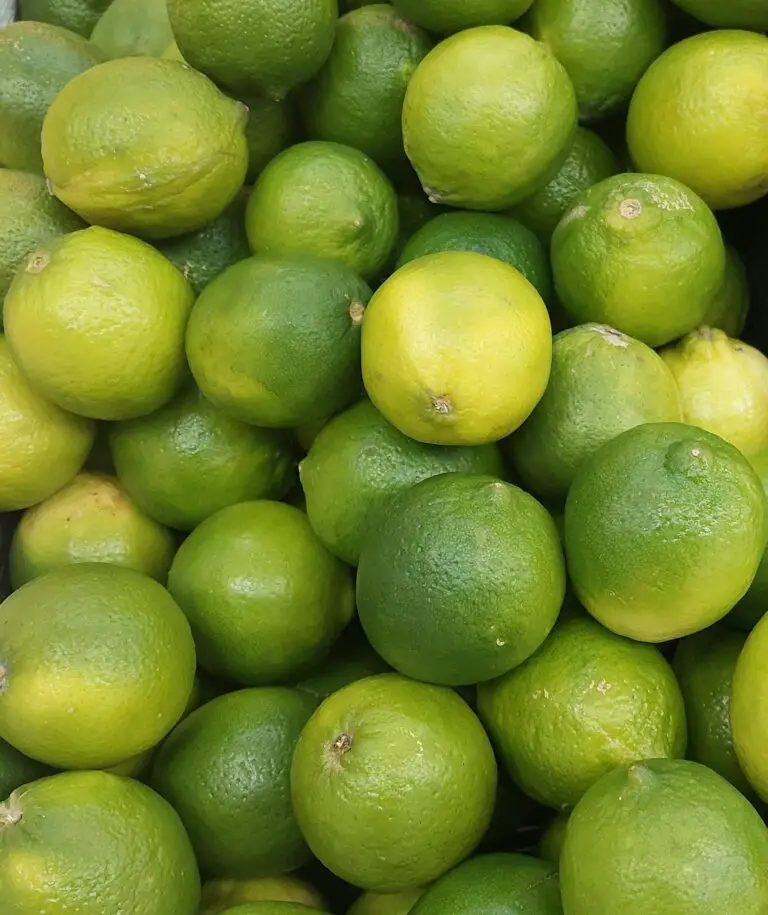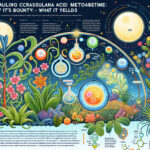Introduction to the Nighttime Wonders of CAM
Welcome to the enigmatic world of crassulacean acid metabolism, or CAM for short. At first glance, it sounds like something you’d expect to find in a high-tech laboratory, but it’s actually nature’s crafty way of making the most out of arid conditions.
Imagine this: a succulent plant in the desert, baking under the blistering sun. The scorching heat puts all living things to a test of survival. Yet, amidst this harsh landscape, CAM plants thrive by flipping the script on photosynthesis. They kickstart their process when the moon takes its nightly throne in the sky, opening their stomata to welcome the cool night air.
Close your eyes and picture an array of diverse Sedum plants, each a small marvel of photosynthetic adaptation. These plants have unlocked a secret – they can prosper where others falter, banking on the night’s grace to reclaim what the fierce sun has denied them: the chance to breathe.
Where common plants would lose precious water in daytime heat through photosynthesis, CAM plants play the long game. They conserve every drop of water by converting it into an organic acid at night, which then breaks down during the day to drive photosynthesis using the stored carbon dioxide. This incredible process is a masterstroke of evolution allowing these plants not only to survive but also to flourish in environments where others might wither away.
This isn’t some dusty, old textbook concept; it’s a living, breathing reality in the world’s deserts, and it’s a testament to the unmatched resilience found in nature’s playbook. Just like a cactus stores water, CAM plants store CO2, their own precious commodity, ensuring their survival in the most demanding terrains.
What’s truly fascinating is that you don’t need to travel to far-flung deserts to witness CAM in action. It’s closer than you think, possibly right on your window sill! Your humble jade plant or the flamboyant orchids at your local nursery; they too are champions of this remarkable adaptation, basking quietly under the moonlight while we sleep, recharging for another day’s silent battle against drought.
So, the next time you gaze upon a succulent or a cactus, consider the extraordinary nocturnal ballet they perform every night. These are not just plants; they are the ultimate survivors, the silent maestros of the plant kingdom, orchestrating their own symphony of survival under a cast of stars.
“`html
Breaking Down Crassulacean Acid Metabolism
Imagine a world where plants have developed a fascinating way to cope with arid conditions and water scarcity. Welcome to the ingenious strategy of Crassulacean Acid Metabolism (CAM), a survival mechanism embraced by some of the most resilient plant species. In this section, we’ll embark on a journey through the CAM process, where plants perform a night-time covert operation and hoard CO2 while we’re all fast asleep.
The Nocturnal Shift
While most plants are known to open their stomata during the day, CAM plants shake things up by doing the opposite. When the sun dips below the horizon, these plants’ stomata spring into action, allowing them to absorb CO2 in the cool of the night. This clever adaptation minimizes water loss, a tremendous benefit in hot, dry environments. Imagine a cactus in the desert, opening its pores only at night to capture a precious breath of CO2 – this is the silent hustle of CAM in action.
The CO2 is promptly fixed into organic acids and stored in vacuoles as malic acid, ready for the next phase in this carefully choreographed dance. It’s almost as if the plant is storing away currency, saving it for a sunny day when it can be cashed in for energy.
Daytime Dealings
As daylight returns and photosynthesis demands kick in, CAM plants close their stomata to retain moisture, much like a safe locking away its treasures. The stored malic acid is then transported from the vacuoles and converted back into CO2, which enters the Calvin cycle to synthesize sugars. It’s here that the plant’s investment pays off, as the CO2 is used to create the sugars needed for growth and sustenance.
By segregating these events by day and night, CAM plants have hit upon a winning formula for survival. Sun-kissed leaves remain tightly shut during the day to prevent water loss, while the nighttime sees them transform into CO2 sponges, soaking up what they need under the starry sky.
This video, titled “Crassulacean plant metabolism|CAM plant, malic acid storage, plant physiology,” provides further insight into the extraordinary world of CAM plants. Tune in to see these wonders of the plant kingdom in action.
To gain a deeper understanding of this fascinating topic, explore further with this comprehensive review on crassulacean acid metabolism biology.
“`
Evolutionary Perspective: Why CAM and Not Something Else?
In an arid world where every droplet of water is precious, plants have evolved remarkable strategies to survive and thrive. Enter Crassulacean Acid Metabolism, or CAM, a water-efficient miracle that’s part science, part survival instinct. Plunge into the world of versatile succulents that have hit upon this nifty photosynthetic trick to make the most out of parched landscapes.
Imagine the scorching deserts and striking succulents resiliently living their best life. They’ve unlocked an evolutionary achievement: CAM, a nocturnal CO2 bouncer of sorts, allowing these plants to fix carbon dioxide at night when the air is cooler and more humid. This catchy adaptation means their stomata (tiny plant pores) can stay shut during the blistering daytime, dramatically reducing water loss—much like choosing to jog during a cool morning rather than the midday sun.
Take a moment to visually savor a crinkled leaf of a CAM plant as it swells in the moonlight, silently hoarding CO2 in the form of acids until the sun’s rays can transform them into carbohydrates. It’s a masterclass in efficiency and a testament to evolution’s creativity in enabling life to adapt in the face of adversity.
Why CAM, though? In short, it’s about making a virtue out of necessity. In places where water is scarce, CAM gives plants a significant edge. It’s a cunning way to outfox drought, leveraging cool nights to prepare for the harsh days. While not all succulents use CAM, those that do have managed to squeeze out a living in areas where others might shrivel and surrender.
But let’s not just leave it to imagination. Dive into the real-life examples; the iconic saguaro cacti of the Sonoran Desert or the jade-like leaves of the Kalanchoe, both mastering the art of nighttime CO2 stockpiling. These aren’t just plants; they’re survivalists in a garden of survival of the fittest!

By dancing to the rhythm of the sun and moon, CAM plants have carved out a niche where few can follow. It reflects a broader lesson in life: adaptability is the key to survival. From the sands of the Sahara to the rocky crevices of the Andes, CAM plants stand as a silent testament to nature’s ingenuity. They are, quite literally, the life of the party in the most unlikely places.
CAM Plants and Their Specialized Habitats
Take a moment to imagine a landscape where the sun blazes down, a place where each drop of water is as precious as gold. It’s here, in these intense environments, that CAM plants showcase their extraordinary survival skills. These botanical wonders have adapted to not just survive, but thrive in regions where other plants would swiftly throw in the towel. Let’s dive into their world and understand how crassulacean acid metabolism enables them to be maestros of moisture conservation.
Often found basking in the heat of deserts or perched on rocky cliffs, CAM plants like the stoic agave and the plucky cactus have become poster children for resilience. They owe their success to a remarkable photosynthetic adaptation that’s akin to having a metabolic superpower. When the relentless sun sets, and the cool embrace of the night takes hold, CAM plants begin their work. They open their stomata, the tiny gatekeepers of leaves, to welcome in the carbon dioxide that’s typically shunned during the day. This is because, during the scorching daylight hours, CAM plants keep their stomata tightly closed to prevent water from escaping.
Photosynthesis After Dark
Once the sun bids adieu, the true essence of crassulacean acid metabolism comes alive. The stored carbon dioxide undergoes a transformation, ending up as an acid, safely tucked away until sunrise. It’s a bit like saving leftovers from dinner to power through the next day’s tasks. With the return of daylight, CAM plants retrieve the carbon, reusing it to fuel their photosynthetic engines, all while keeping those stomata closed to maintain their internal cache of moisture.
This nocturnal twist on photosynthesis is nothing short of a master-stroke in the game of survival. In habitats like the parched Californian deserts or the rocky outcrops of the Canary Islands, these plants stand as testaments to the adaptability of life. The ability to optimize photosynthesis for specific environmental conditions isn’t just impressive; it’s inspirational.
Imagine wandering through Joshua Tree National Park and witnessing the giant yuccas that dot the landscape. Each one is a testament to the efficiency of CAM. They don’t waste resources on frivolous transpiration during the heat of the day. Instead, they’ve honed a strategy that lets them sock away the carbon dioxide at night, ensuring there’s enough moisture to go around, even when the conditions are drier than a stand-up comedian’s wit.
In a bustling world where efficiency is everything, CAM plants are the ultimate hustlers of the plant kingdom. Their unique approach to managing energy and resources is more than just smart; it’s evolved genius. So the next time you see a succulent or a prickly pear cactus, take a moment to appreciate the innovative ways in which these plants have carved out their niche in the world.
CAM vs. C3 and C4 Photosynthesis: A Comparative Study
Imagine you’re a plant in a scorching desert or atop a sun-baked cliff. As water becomes a scarce ticket to survival, you adapt, evolve and innovate. That’s precisely the story of plants using Crassulacean Acid Metabolism, commonly referred to as CAM photosynthesis. But how does CAM stack up against its photosynthetic siblings, C3 and C4? Let’s dive into a comparative study that’s as refreshing as a splash of water on a hot summer’s day.
Unlocking the Mystery: What is CAM?
At its core, CAM is a masterclass in water conservation. When the sun beats down, CAM plants shut their stomata—the microscopic windows on their leaves—to curb water loss. But they’re not off duty. Come night, while other plants are sleeping, CAM species spring into action. They open their stomata wide, absorb carbon dioxide (CO2), and store it as an acid, ready for photosynthesis during the daylight.

This nocturnal adventure lets them separate the processes of taking in CO2 and turning it into sugar, which turns out to be a huge water-saving hack!
The Water-Sipping Champions: CAM Plants
Turn your gaze to the succulents adorning your windowsill or the pineapple fields of Hawaii, and you’re witnessing CAM at work. These plants use a fraction of the water needed by most others, which makes them the Houdinis of the plant kingdom—escaping the dire fate of dehydration.
The Sun-Loving Classic: C3 Photosynthesis
Most plants rely on C3 photosynthesis, a straightforward process that happens during the day. These plants gulp in CO2 and use sunlight to convert it into glucose. However, when faced with heat, their stomata close, and efficiency plummets—a major downside in hot and arid regions.
The Heat Beaters: C4 Plants
C4 plants, like corn and sugarcane, have evolved a nifty workaround. They grab their CO2 quickly and bundle it off to specialized cells where they can use it more efficiently. This reduces the need for open stomata and makes them better suited for hot climates compared to their C3 cousins, though they still lag behind CAM champions in terms of water efficiency.
In sum, this tableau of photosynthesis presents a spectrum of innovation. From the classic C3 pathway to the heat-dodging C4 manner and finally to the water-wise wonders of CAM – every method is a survival strategy tuned to the rhythms of the environment. So next time you encounter a quirky cactus or a lush, leafy fern, take a moment to appreciate their unique adaptations to the game of life. They’re not just greenery; they’re glimpses into the genius of nature’s green factories.
CAM’s Molecular Mechanics: Enzymes and Intermediates
Welcome to the nighttime world of Crassulacean Acid Metabolism, or CAM – the innovative strategy some plants use to photosynthesize while conserving precious water. Imagine being in a hot, arid environment where every drop of water is as valuable as a gemstone. That’s precisely where CAM plants shine, squeezing out every bit of efficiency from the water they harvest. But how do they achieve this botanical brilliance? Let’s peel back the leaves and expose the molecular machinery at work.

When twilight tucks the sun into bed, CAM plants get down to business. They open their stomata – microscopic windows on their leaves – to let in the cool, night air. Here’s where phosphoenolpyruvate carboxylase (PEPC) takes center stage. This enzyme is like a molecular gatekeeper, ushering in carbon dioxide to be bound to an organic molecule called phosphoenolpyruvate or PEP. This nightly ritual forms oxaloacetate, which is then converted to malate, where the CO2 is securely stored until daybreak.
Picture it like a bustling night market in your cells, where stalls of enzymes hawk their biochemical wares. The malate accumulated overnight is stashed away in the plant’s vacuoles, almost as if storing spices in sealed containers for the next day’s feast. As the sun peeks over the horizon, the CAM plants close their stomata to trap the moisture and heat. The stored malate is now set free from its cellular pantry, and breaking down malate releases the CO2 back into the fold for photosynthesis—you could call it a “time-release” strategy to make the most of the sunlight hours.
Think of malate as a rechargeable battery—charged at night and providing energy during the day. This savvy system means CAM plants, like the pineapple or the agave, are horticultural Houdinis, conserving water while still performing the photosynthetic magic that powers their growth. As the sun climbs higher, the cycle comes full circle: the CO2 is used in photosynthesis to create sugars for energy, much like a solar panel absorbing sunlight to power a home.
Such a process does raise eyebrows, doesn’t it? While most plants go through this photosynthetic endeavor during the day, CAM plants have flipped the script, choreographing their dance under the moonlight. By unlocking the secrets of the CAM cycle, we unearth the profound adaptability of plants, revealing a silent harmony with the rhythms of our planet. It’s a beautiful reminder that life, in all its forms, finds a way to make lemonade out of life’s driest lemons—or, in this case, a refreshing cactus juice.
Technological Advancements in Studying CAM Plants
Imagine a plant that thrives in the arid heartlands, where water is but a fleeting visitor. This isn’t the stuff of science fiction; it’s the everyday reality for species using Crassulacean Acid Metabolism (CAM). But how does CAM really work beneath the surface? Well, thanks to recent technological breakthroughs, we’re uncovering the secrets of these remarkable plants one molecule at a time.
Visualize a thermal camera that can detect the faintest heat signatures, now being used to observe the nocturnal activities of CAM plants. By capturing images of these plants during their active phases at night, researchers can study how they open their stomata—the tiny pores on their leaves—to absorb carbon dioxide while minimizing water loss. It’s like watching a ballet of survival, where every move is calculated to capture essential resources without sacrificing precious moisture.
On a molecular level, advanced gene-sequencing technologies have revolutionized our understanding of the CAM process. Scientists can now explore the complex dance of genes that come alive at night, orchestrating the conversion of carbon dioxide into organic acids. As the sun rises and the leaves close to conserve water, these acids are transformed back into sugars for growth—a remarkable adaptation to harsh environments.
Dive into the digital ecosystem, and you’ll find sophisticated computer models simulating how these plants might respond to future climate scenarios. By predicting how CAM plants might adapt to increasing temperatures or extended droughts, researchers are not just peering into the crystal ball of climate resilience but potentially finding new ways to engineer crops that can withstand our changing world.
And speaking of engineering, CRISPR-Cas9, a groundbreaking gene-editing tool, is opening doors to customizing plants for better drought tolerance. Imagine crops with the water-saving wizardry of CAM engineered into their very DNA—this is no longer a pipe dream but a tangible goal within grasp, thanks to the precision and efficiency of this cutting-edge technology.
From illuminated greenhouses mimicking desert suns to spectrometers capturing the chemical conversations within leaves, these tools are not just revealing the intricacies of how CAM works. They are providing a pathway to harness its potential, paving the way for agricultural innovations that could redefine our relationship with water and the environment.
It’s a time of unparalleled discovery, and you don’t need to take my word for it. Check out this video for a glimpse into the high-tech world of CAM plant research:
As you marvel at these technological marvels, remember that they are not just about decoding the secrets of crassulacean acid metabolism. They are gateways to a future where our food grows in harmony with the planet—a future where science and nature walk hand in hand into a sustainable world.
Unlocking CAM Secrets for Agricultural Benefits
Let’s talk about how understanding Crassulacean Acid Metabolism, or CAM, is not just a scientific endeavor, it’s a gateway to agricultural innovation. Imagine a world where crops thrive in arid, desert-like conditions, using water as sparingly as a camel crossing the Sahara. This isn’t a far-fetched fantasy; it’s the real potential of harnessing the secrets of CAM.
CAM plants are the botanical equivalent of survival experts. When the blistering sun sets, and the cool night air rolls in, CAM plants get to work. They open their stomata – tiny pores on their leaves – to capture carbon dioxide, while most other plants sleep. This carbon is then stored as malic acid, ready to be transformed into glucose for growth when sunlight returns. This nocturnal habit is like storing away treasures in the dark, only to use them to flourish in the light of day.
Think of the prickly pear cactus, thriving in the arid American Southwest or the succulent jade plant adorning windowsills with plump, water-filled leaves. These plants have mastered the CAM process, and here’s where it gets exciting for agriculture. By studying these natural wonders, scientists aim to transfer the CAM strategy to essential food crops, enabling them to grow in environments previously considered too harsh.
Imagine rice paddies lush with grain in areas plagued by drought, or cornfields standing tall without the need for frequent rainfall. The implications of incorporating CAM properties into such staples could revolutionize food security in some of the world’s driest regions. It’s not just about growing plants; it’s about cultivating hope for a future where hunger is mitigated by the wisdom gleaned from the plant kingdom.
But let’s ground ourselves back to Earth for a moment. Implementing CAM into crops isn’t a simple cut and paste job—it’s a complex dance of genetics, environment, and patience. Yet, the pursuit of this knowledge underscores the ingenuity of human endeavor, seeking nature’s hints to foster a more resilient and sustainable food system. As we enlist plants to battle against the challenges of climate change and resource scarcity, understanding and utilizing CAM is not just beneficial—it’s essential.
Frequently Asked Questions
Have you ever wondered how some plants thrive in arid conditions, almost defying the scorching heat and scarce water supply? Let’s dive into their secret world and unravel the mystery of crassulacean acid metabolism, or CAM for short—a remarkable adaptation that allows them to flourish where others would wilt.
Picture a cactus in the desert, standing tall against the relentless sun. You may ask, “How does it survive?” The answer lies within its cells, where a night-time operation kicks into gear. During the night, the stomata—tiny openings on the plant’s surface—open up to inhale carbon dioxide, which is then converted into organic acids and stored. As dawn approaches, the stomata close to retain water, and those stored acids are turned back into carbon dioxide for photosynthesis. This nifty switch-up lets our leafy friends photosynthesize during the day without losing precious moisture.
Now, it’s not just cacti practicing this nocturnal ritual. Many other succulent plants, like the plump leaves of the jade plant on your windowsill or the robust pineapple crop in tropical fields, use CAM to their advantage. So next time you enjoy a slice of pineapple or admire a succulent, remember the intricate dance of chemistry and timing that keeps them thriving.

Ever been caught out at night in the cold after a hot day and felt the chill? Plants using CAM feel a similar shift as they stash away the warm day’s carbon dioxide during the cool night. But instead of shivering, they’re prepping for a day of sunbathing, their leaves sealed tight to prevent water loss. It’s like having a water bottle always at the ready—an adaptation that means everything in the desert.
One might wonder if these sly survivalists ever misstep. Do they ever open their stomata at the wrong time? Nature has fine-tuned their rhythm so precisely that they can sense the humidity and temperature, adjusting their stomata accordingly. It’s a bit like having a smart home thermostat, but for plants. This way, they’re always in tune with their environment, making the most of what they have.
So, as you ponder over the plights and triumphs of these resilient flora, remember the silent symphony of chemistry that plays every night, allowing them to capture carbon in their unique way. Their survival tactic is not just amazing—it’s a testament to the adaptability of life on our diverse planet.
Understanding the Metabolic Marvel
At its heart, CAM is about resourcefulness. In a world where efficiency can make the difference between thriving and merely surviving, these plants show us the way. With their clever use of nighttime carbon dioxide storage and daytime photosynthesis, they’re like the ultimate eco-warriors, minimizing water use without compromising their growth.
It’s fascinating to consider what other secrets lurk within the plant kingdom, waiting to inspire us with strategies for sustainability and survival in the face of adversity. Each leaf, each root, each flower might just hold a blueprint for the future. In the grand tapestry of life, CAM plants are a vibrant thread, weaving resilience and beauty into the harshest of landscapes.



